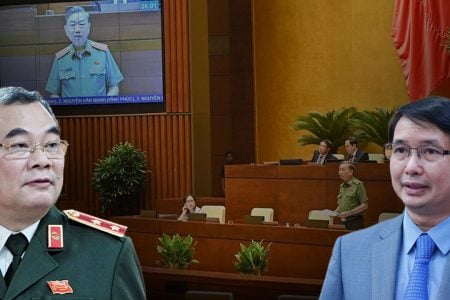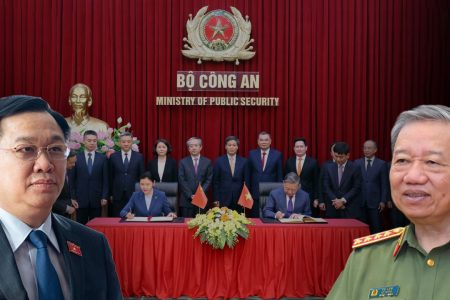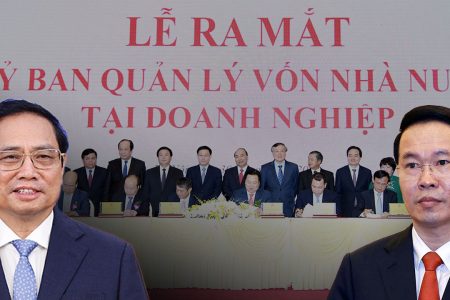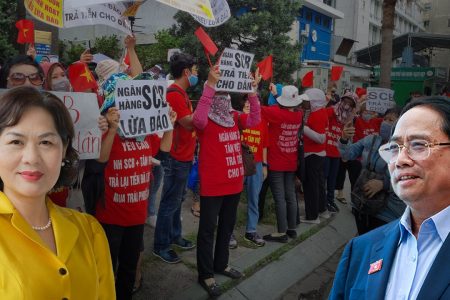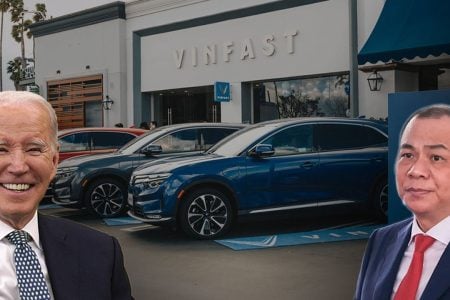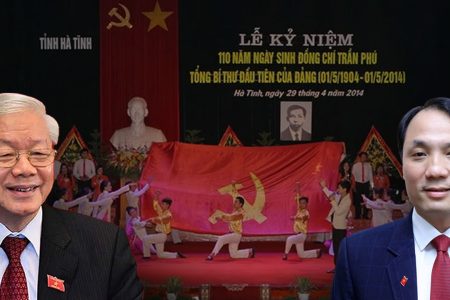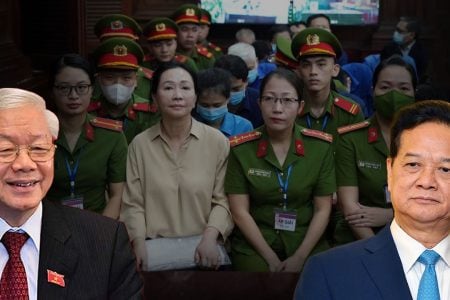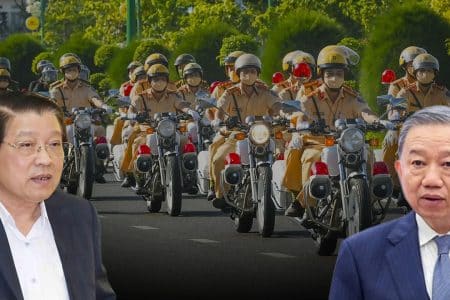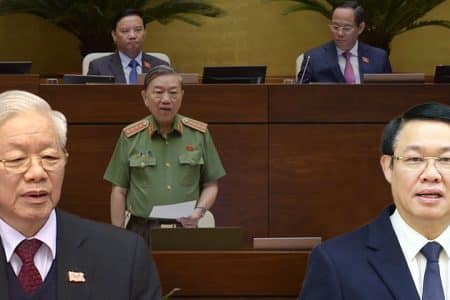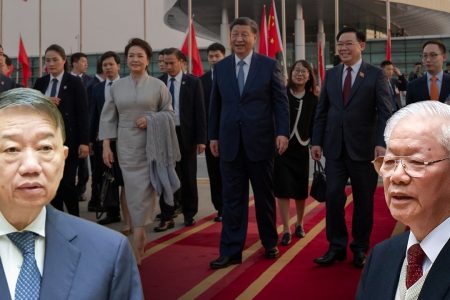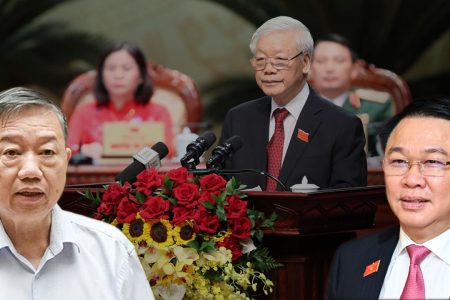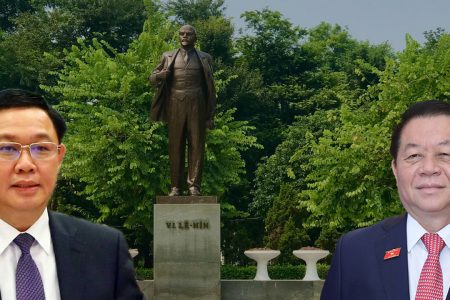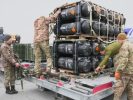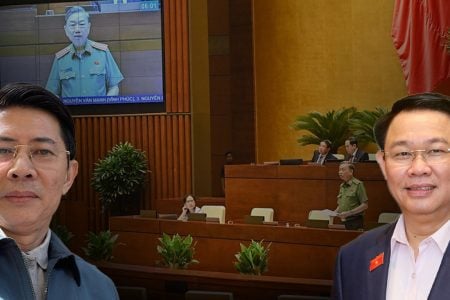
After the Lunar New Year (or Tet), numerous Vietnamese people flock to festivals, pagodas, and conduct spiritual tours, not only at the places of the old village but on the remote roads of the country.
That phenomenon raises some of the following questions, problems, and issues, from many years ago, in many aspects: from protecting natural landscapes, preserving the environment and historical sites, to old architecture, planning, and construction, of which this little article can only focus on a few aspects. Spiritual tourism: building temples for entertainment?
In recent years, a large number of pagodas, Buddha statues, and monasteries have been built on the mountains in the North. Large and small temples have been constructed everywhere. All of them are located on beautiful, outstanding terrain, leveled with mountains and forests, with a choice of layout and feng shui as a palace. Like building Bao An Thien Tu with giant Buddha statues in Sapa and Truc Lam Ban Gioc, next to Lung Cu, with Buddha statues spread along the length of the country.
The northernmost province of Cao Bang has the two most populous ethnic groups, the Tay and the Nung, the Kinh (the ethnic majority in Vietnam) accounts for only 5.8%. Ha Giang is the most populous H’Mong, then the Tay, these two ethnic groups make up more than 50% of the population. While Kinh people mostly follow Buddhism, ethnic minorities in mountainous areas do not.
It is said to build a monastery for spiritual needs, for the purpose of learning to understand the Dharma for practitioners and Buddhists. But the monasteries are often located in places with a history related to Buddhism, and you should not build Buddhist temples everywhere you like.
There is also an argument that frontier areas need to affirm Vietnamese culture, to be grateful to Buddhism. Then where are the cultures of other ethnic groups?
Do local people go to pagodas? Or the temples and spiritual tours target domestic tourists?
The current construction is essentially like a business product. Most of them are on brand new populations, becoming a trend in the provinces to build Buddha statues and temples combined with entertainment!
Looking at the Lao Cai tourism statistics, 65% of visitors visit spiritual tourist sites, so this is considered a key attraction for tourists. The need for worship or spiritual tourism develops into making a huge amounts of money.
Meanwhile, pagoda relics ranked for a long time have been degraded, so it is difficult to find funds for restoration. Wondering, under the flabby surface to build this new temple, is it clear the “Dharma end”? Especially when scandals such as Dia Nguc pagoda, Tam Dao, or Ba Vang, Quang Ninh revealed that they were angry or not.
Sacrifice natural resources to enrich the people of the country?
Every province wants to do tourism to get quick profits, every business wants big profits.
Officials, on the one hand, have to wait for charity to support poor people and build schools. On the other hand, it is determined that “culture must be one step ahead” with projects of squares, monuments, and pagodas, often put on the “face” that everyone understands that a large amount of the income from spiritual tourism goes to local leaders’ pockets.
Who remembers to “solve the unjust” for the forests of death and polluted water sources? Or more broadly, who is responsible for the increasingly obvious changes in the climate and floods downstream?
As for the local people, how do they benefit? Is the “drastic change” that people often describe, is it for all? If so, the school will be built, the hospital is renovated, the network of clean water spread, the roads are clear, the bridges are solid … not only around projects but also in remote villages. If so, why do localities still have to take labor export as the top target?
People, who go to the ceremony – are you innocent when you go to the ceremony everywhere?
The pagoda has been built anyway, so let’s just go to the ceremony? “In the old days, the pagoda was only on the mountain, what was making a fuss about?” Such self-criticism is easy to hear.
The difference is perception and scale.
In the past, the land was small with little population, the pagoda was built in a secluded or pure place to keep away from the human world, focus on practice. Now the temple is also built on the top of the mountain, but with a mass of millions of people coming, and with it a series of service machines, tourism, the scale of impact has multiplied.

Our country, on the one hand, “takes a shortcut“, develops on the basis of technical and social achievements that humanity has gone through many periods of struggles and mistakes to refine. On the other hand, allow people to also destroy the environment, compare what they do in the 21st century with the car marks or the cognitive and technological limitations of the 18-19 century in the world? Is it a “double standard“?
We must not forget a few years ago during the holiday season at the end of April when the people of Sapa had to cut down on irrigation and domestic water in order to keep water for hotels and services for tourists. Thus, basic living conditions, and local farming – which makes up the identity of the resort – are also ranked secondary to focus on tourist attraction.
That is the visible impact, how many other consequences we don’t know about, even the long term?
Without improvements in living conditions for the local people, we cannot innocently assume that spending money on such tourist sites is a contribution to local economic development.
Stricter, though not responsible, even tourists are contributing to the machinery that exhausted resources, benefiting the interest groups, deepening the gap between rich and poor, and make local people suffer.
Mass tourism is a long-term goal?
Today’s tourism industry still focuses on targeting the majority, with “spiritual tourism” combined with “cable car travel” which covers Vietnam’s mountains and forests. Mainly new construction, with massive infrastructure, strong impact on location and nature. This type of tourism attracts mainly domestic tourists.
Another direction, based on discovering natural beauty, experiencing local cultures, beliefs, and community-based tourism, taking it as the center of the content of the visit, with the least impact on the place to just exploit and keep for the next generations.
This direction, although new, with a concentration of many international tourists, is increasingly chosen by young people who are more aware of the environment and need to experience and respect the local culture.
In general, in the annual assessment of the World Economic Forum (WEF), Vietnam’s tourism competitiveness index for the past few years has increased significantly (ranked 63 in 2019, up 12 places compared to 2015). However, the plus point still focuses on competition on price, on the cheap labor force, on the attractiveness of natural and cultural resources. Few mentioning the “minus” point of alarm is always in the “quality” categories of health, hygiene, tourism services, and infrastructure, especially the lowest environmental sustainability: 121/136 (ranked in 2019).
It is a fact that the number of domestic tourists in our country accounts for more than 80%, nearly 5 times higher than the number of international visitors, but the total tourism revenue from domestic visitors only accounts for 45% ($14.5 billion compared to $18.3 billion from international visitors), according to the General Department of Tourism in 2019. Thus, the types of spiritual tourism which consume resources are for the number of domestic tourists. Domestic tourism’s economic efficiency is much lower than that of international tourism.
In other words, we are choosing unsustainable directions, exploiting natural resources, and cultural distortions, to target tourism with low profitability.
Conclude
Sapa, Ban Gioc yesterday, Lung Cu Ha Giang today, cut trees and demolish mountains to build a spiritual tourist spot. How many more are floods devastating local villages tomorrow? And Vietnamese freely worship regardless of the temples, Buddha statues. It is a form of entertainment and business in the land where ethnic minorities live.
Moreover, with the construction of a work of this religion on land where many other religions are concentrated without the needs of the local people, it should be a form of “cultural invasion.” And how much longer will this continue?
2020 is a year of exhaustion for the tourism industry, is the sudden breaking of the growing momentum a chance for tourists to calmly look back in their direction?
Every one of us should ask ourselves questions about consumer lifestyles to protect the environment.
Thoibao.de (Translated)





